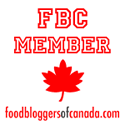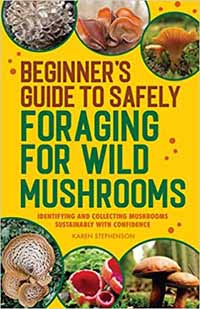

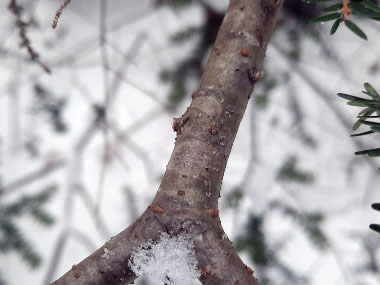
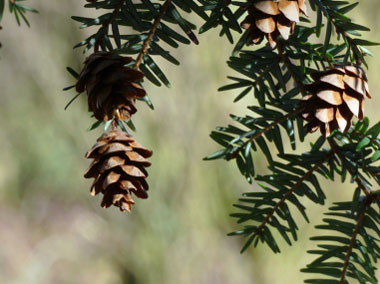
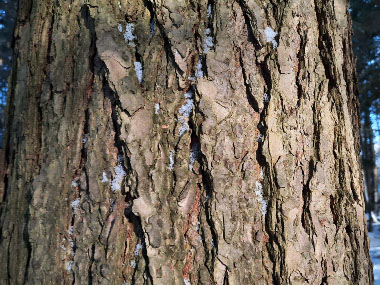
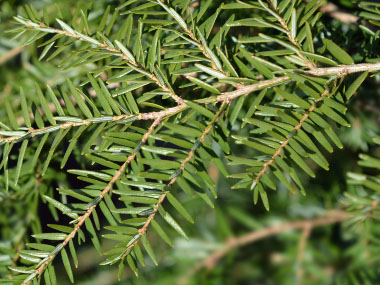
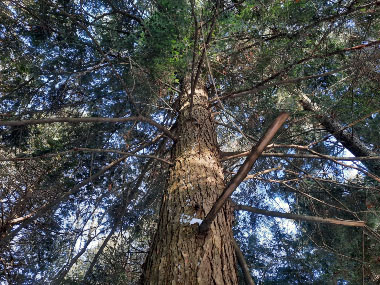
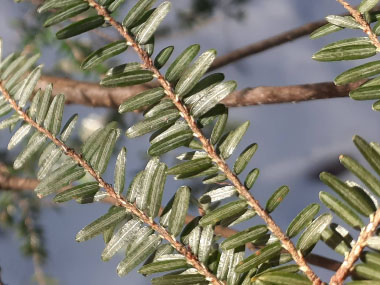
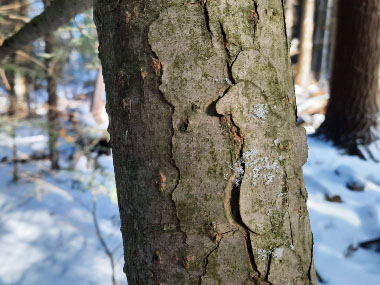
To support our efforts please browse our store (books with medicinal info, etc.).
Eastern Hemlock is coniferous, straight-trunked, pyramidal tree with long, pendulous limbs and short-needled, feathery branches. Evergreen needles are dark green with white striped undersides. The long, slender, horizontal branches often drooping down to the ground. It can be confused with the poisonous yew. Eastern Hemlock needles are rounded at the tips, but the yew needles are sharply pointed. Also, hemlocks produce cones, while yews make a fleshy, bright red fruit. Under optimal conditions, the Eastern Hemlock can live up to 600 years. Some people may be confused (in name) with Poison Hemlock. Eastern Hemlock is not toxic to humans and makes an enjoyable aromatic tea. The Eastern Hemlock is the official state tree of Pennsylvania. This tree is also known as the Canada Hemlock.
Trunk/Bark
When young, the bark is gray-brown and smooth then as it matures, it turns scaly. Older trees are red-brown with wide ridges and furrows.
Branches/Twigs
Branches are slender, gray-brown, and relatively smooth.
Height
An average-sized tree typically grows up to 24 metres (80') tall, although some trees can be taller depending on conditions.
Leaves/Needles
This evergreen has flat, single needles that are slightly tapered and occur in two ranks. Needles grow to 1.25cm (1/2") long, are shiny dark green on the top. Underneath there are two white lines.
Flowers
This tree is monoecious; males produce yellow, small, round flowers; females are light green at branch tips.
Fruit
Cones are ovoid, light brown, and measure 2cm (¾”) long with rounded, entire scales. Cones mature in early fall.
Habitat
Hemlock is generally found in forested or shady areas with moist soil. Eastern hemlock occurs as a dominant or codominant in coniferous and mixed-hardwood forests. Eastern hemlock can be found from New Brunswick and Nova Scotia to southern Quebec and Ontario, south to northern Georgia and Alabama, west in the lake states to Minnesota (although rare), Michigan, Ohio, and Indiana.
Edible Parts
The needles are high in vitamin C and can be used to make tea. Historically, the inner bark was eaten raw or cooked. It can be dried, ground into a powder and then used as a thickener in stews or added to flour when making bread.
Other Name
Canada Hemlock.
Recipes
Winter Survival Food Handbook

PDF Plant Magazines
Types of Wild Food
Geographic Zones Seasons
Disclaimer
EdibleWildFood.com is informational in nature. While we strive to be 100% accurate, it is solely up to the reader to ensure proper plant identification. Some wild plants are poisonous or can have serious adverse health effects.
We are not health professionals, medical doctors, nor are we nutritionists. It is up to the reader to verify nutritional information and health benefits with qualified professionals for all edible plants listed in this web site. Please click here for more information.
Why Edible Wild Food?
- Food costs are rising
- Free, wild food is readily abundant
- Wild food adds nutrition to your diet
- Wild food can help treat various medical conditions
